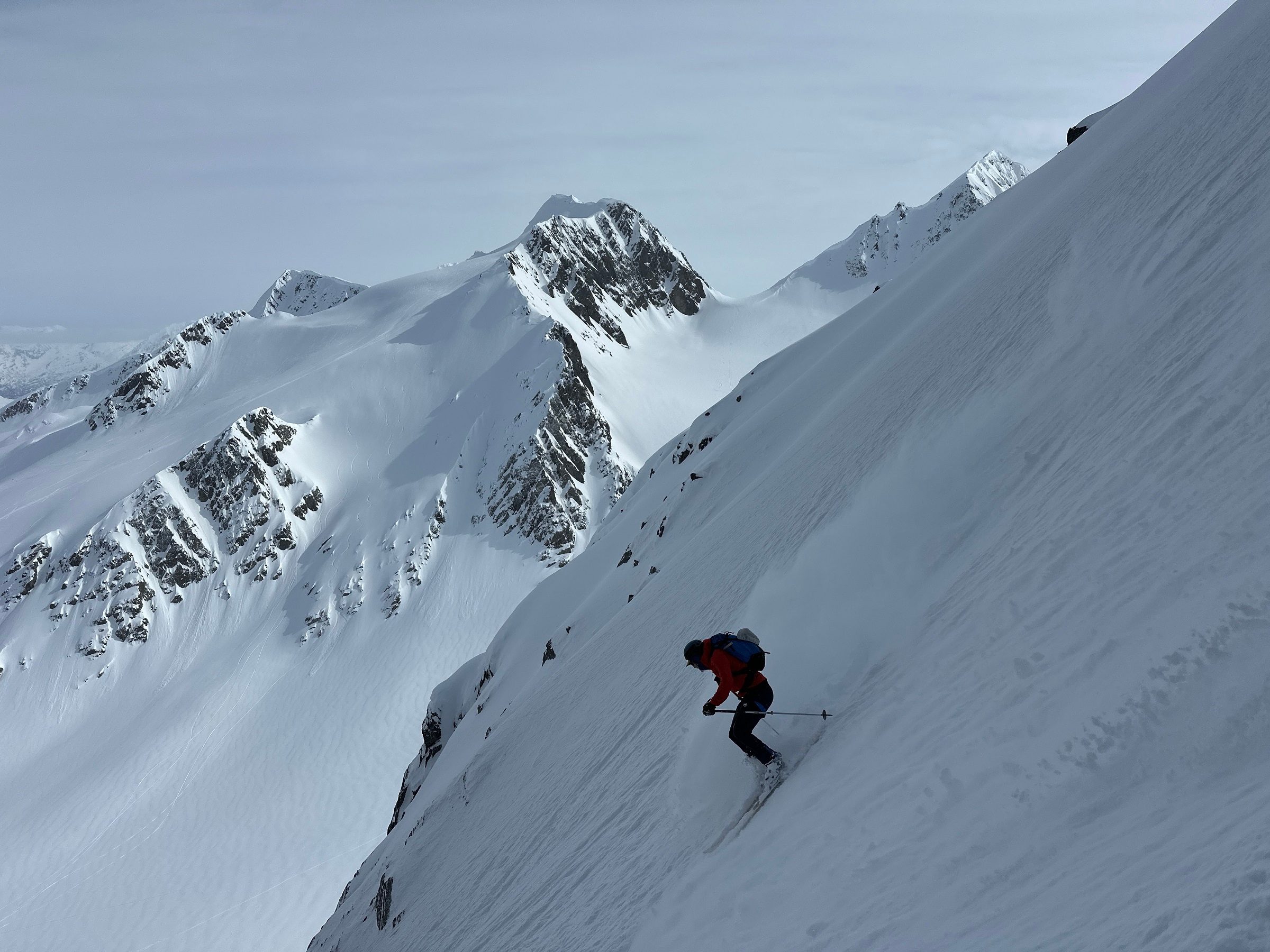Backcountry skiing offers an unparalleled connection to nature, allowing you to escape crowded resorts, challenge yourself, and explore unspoiled terrain. This guide will help you understand the essentials, including the gear you need, avalanche safety, terrain navigation, and why hiring a guide can make all the difference. Whether you’re just starting or refining your skills, this post is your stepping stone to an unforgettable adventure.
This blog post is a synopsis of this webinar presented in partnership with 57hours:
Why Backcountry Skiing?
Unique Adventures: There’s nothing quite like the untouched beauty of remote slopes. Backcountry skiing allows you to access areas rarely seen by others, offering a deep sense of solitude and connection to the wilderness.
Personal Growth: Beyond physical challenges, backcountry skiing hones your decision-making, technical skills, and resilience in unpredictable environments.
Support Local Communities: Hiring local guides not only ensures your safety but also supports their businesses and contributes to sustainable tourism in their communities.
Understanding the Terrain
Backcountry skiing isn’t a one-size-fits-all activity. Understanding the different types of terrain is critical:
On-Piste: These are groomed, marked trails within ski resort boundaries, perfect for beginners but not part of backcountry skiing.
Slackcountry/Sidecountry: Areas just outside resort boundaries accessible by lifts. While convenient, they require avalanche awareness as they’re unpatrolled.
Backcountry: Remote areas far from resorts that demand self-sufficiency, proper gear, and knowledge of avalanche safety. Here, you are truly on your own.
For more on avalanche awareness, visit Avalanche.org.
Essential Gear for Backcountry Skiing
Proper equipment is non-negotiable in the backcountry. Here’s what you’ll need:
Skis and Bindings
Alpine Touring (AT) Skis: Balanced for uphill efficiency and downhill fun.
Freeride Touring Skis: Perfect for powder enthusiasts prioritizing downhill performance.
Tech Bindings: Lightweight and ideal for long ascents. Popular options include the Dynafit ST Rotation and Marker Alpinist.
Skins
Nylon Skins: Durable and great for beginners.
Mohair Skins: Lightweight with superior glide.
Combination Skins: A blend offering balanced grip and glide. Store skins in cool, dry places and maintain adhesive regularly.
Safety Gear
Avalanche Transceiver: A lifesaving tool to locate buried skiers.
Shovel and Probe: Essential for efficient rescues.
First Aid Kit: Tailored for backcountry emergencies.
Learn more about essential avalanche safety gear from the American Avalanche Association.
Dressing for the Conditions
Layering is the key to staying comfortable in dynamic weather conditions:
Base Layers: Opt for synthetic or merino wool blends for moisture-wicking and warmth.
Mid-Layers: Insulating puffies trap heat effectively.
Outer Shells: Choose between hardshells (waterproof and windproof) or softshells (breathable and flexible).
Accessories: Insulated gloves, a helmet, and sun protection are essential.
For detailed layering tips, explore resources at Utah Avalanche Center.
Navigating Avalanche Terrain
Understanding avalanche risk is critical when skiing in the backcountry:
Route Planning: Use tools like CalTopo, Gaia GPS, and Google Earth to map safe paths.
Forecast Review: Always check avalanche forecasts before heading out. Utah-specific reports are available at Utah Avalanche Center.
Travel Practices: Move one at a time through risky zones and communicate constantly with your group.
ALPTRUTh Checklist
Use this to identify avalanche risks:
Avalanche activity: Have there been recent slides?
Load: Is there significant new snow or wind-deposited snow?
Path: Are you near established avalanche paths?
Terrain traps: Are there gullies or cliffs that could amplify consequences?
Rating: What’s the avalanche danger rating in the area?
Unstable snow: Are there signs of instability like cracking or whumphing sounds?
Thaw instability: Are warming temperatures weakening the snowpack?
For in-depth training, consider avalanche education courses through Avalanche.org.
Human Factors in Avalanche Safety
Group dynamics and individual decision-making play a significant role in backcountry safety. Avoid common pitfalls:
Overconfidence: Don’t let past successes dictate current decisions.
Peer Pressure: Avoid risky choices to impress others.
Tunnel Vision: Be open to changing plans if conditions demand it.
Develop these skills through mentorship and professional courses. Find opportunities at American Avalanche Association.
Why Hire a Guide?
Backcountry skiing requires more than gear and knowledge—it’s about experience. A guide can:
Ensure your safety with expertise in avalanche terrain.
Plan efficient routes and manage risks.
Provide invaluable local knowledge for a seamless adventure.
Ready to Get Started?
Explore our guided trips and let WMG take you on the adventure of a lifetime. Whether you're looking to tackle iconic destinations like the Wasatch in Utah or Denali National Park, we’ll ensure you’re prepared, safe, and thrilled every step of the way.
